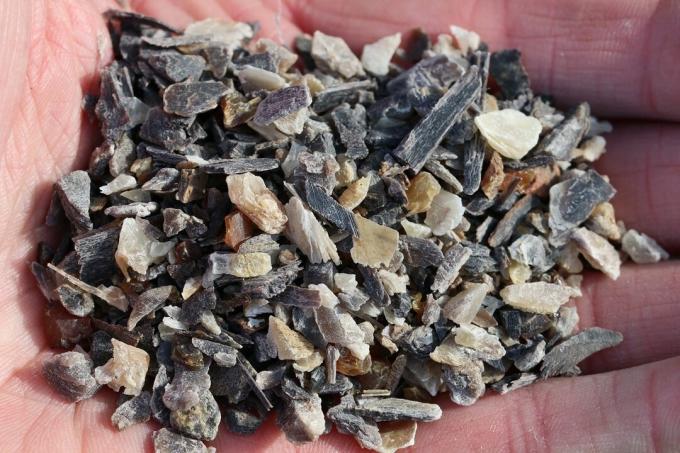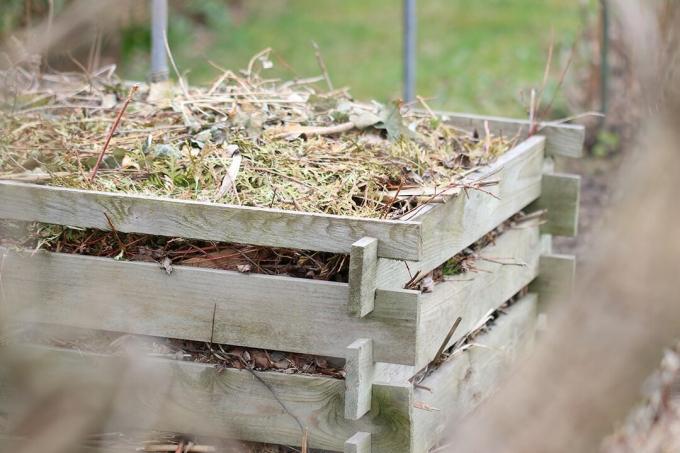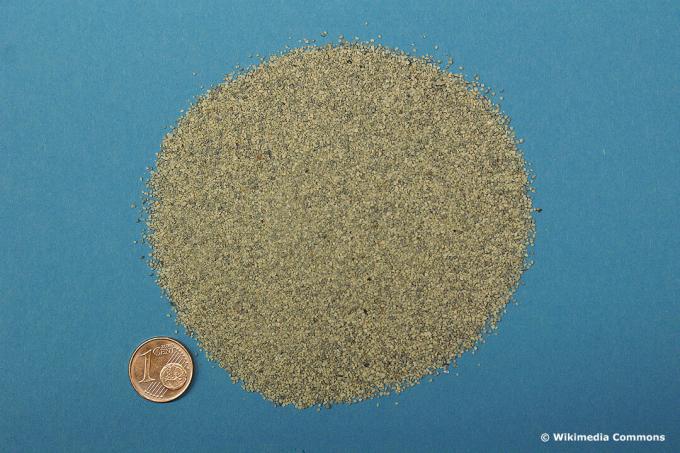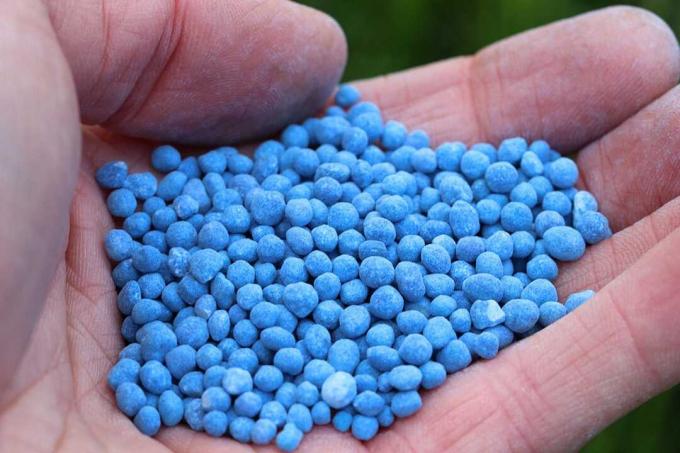
table of contents
- Growing quite slowly
- Correct choice of fertilizer
- Various fertilizers
- Horn shavings / horn meal
- Ripe compost
- Coffee grounds
- Algae lime
- Long-term fertilizers from specialist dealers
- Special fertilizer for boxwood
- Blue grain
- Time to fertilize
- Except for potash fertilization
- frequently asked Questions
Boxwood is very popular. It is used as a hedge, solitary plant, border of beds, even as beautifully shaped figures. Appropriate fertilization is important so that the boxwood remains lush green, vital and beautifully dense.
In a nutshell
- chalk-loving and slowly growing
- mainly nitrogen and potassium are necessary
- good fertilizers: compost and horn shavings
- Special fertilizers available in specialist shops
- Fertilizer application only from March / April to August
Growing quite slowly
In the meantime, the box tree (Buxus) is setting wonderful accents in many a garden in this country. Because of its evergreen foliage, it is a real eye-catcher. It hardly makes any demands and is usually very easy to care for. Buchs grows relatively slowly and is not exactly one of the heavy consumers. But it also needs regular fertilization so that it retains its vitality, a corresponding winter hardiness and its lush green foliage all year round. The beautifully shaped trees in particular need a balanced fertilization so that they can overcome the stress of pruning and also form a dense green cover of leaves. Even if boxwood grows slowly compared to other shrubs and trees, it needs different nutrients, but in a smaller amount. It is essential to pay attention to this, otherwise damage in the form of over-fertilization or nutrient deficiency can quickly occur.

Tip: It is advisable to conduct a soil analysis in a laboratory prior to fertilization. There the fertilizer requirement can be correctly determined. Based on these fertilization recommendations, the box trees are supplied with nutrients as required and overfertilization is excluded.
Correct choice of fertilizer
When fertilizing boxwood, it is important that the needs of the crop are known. A correct choice of fertilizer should definitely ensure a slightly alkaline pH value of the soil. This is very important for the lime-loving plant, because this is the only way for the boxwood to be able to absorb and utilize the administered nutrients. For healthy growth, the nutrients offered must be precisely matched to one another. Are important
- Nitrogen for vigorous growth
- Iron for the formation of chlorophyll (leaf green)
- Magnesium supports chlorophyll formation
- Zinc also to support growth
- Potassium to develop winter hardiness
- Phosphorus as an energy source
Phosphorus is also responsible for the formation of flowers. In the case of the book, however, these are quite inconspicuous and small. For this reason, only small amounts of phosphorus in the fertilizer are sufficient here. When choosing a fertilizer, it is therefore essential to carefully consider the needs of the crop. An incorrect dosage or composition quickly becomes apparent in a lack of certain nutrients:
- initially pale leaves
- then turning yellowish
- later brown and withered
- eventually leaves fall off

In this case, fertilizing the boxwood is essential. It is essential to pay attention to the composition of the fertilizer used. It is also good to know that box trees planted as a hedge have a higher nutritional requirement than solitary plants. The hedge plants have less soil volume per plant. As a result, these plants can quickly become competitors for the nutrients in the soil.
Various fertilizers
In the fertilizer, mainly the ratio between nitrogen and potassium must be balanced. Here the concentration is just as important as the further composition of the fertilizer. Organic fertilizers are particularly suitable. The nutrients are in a complex form and must first be processed by the microorganisms living in the soil before the plant can absorb them. These fertilizers are particularly gentle and also ensure a long-term supply of nutrients. Incidentally, the administration also promotes the organisms in the soil and at the same time increases the quality of the soil. Over-fertilization can also be excluded. Good organic fertilizers are
Horn shavings / horn meal
- consisting of ground hooves and horns from cattle
- contain: 12 to 15% nitrogen, up to 1% potassium and less than 1% phosphorus
- pH value neutral
- optimal long-term fertilizer
- Release of nutrients over months depending on temperature, aeration of the soil and moisture
- best time to give from March / April
- a handful or 30 to 40 g / m² is usually sufficient in spring
- possibly a second dose with compost in summer
- work well into the upper layer of soil

Note: The finer the horn is ground, the faster the absorption and utilization of the nutrients takes place.
Ripe compost
- contain more potassium than nitrogen
- Phosphorus and magnesium present in equal amounts
- must be worked well into the soil
- the deeper, the better the effect
- Incorporation in early spring from March
- optimal in combination with horn shavings
- also provides root protection against late frosts
These two organic fertilizers should be used every three to four months as required. A maximum of three liters of compost per square meter and one level tablespoon of horn shavings should be used.

Note: The composted seeds of weeds can be a disadvantage. However, this problem does not occur if only leaves and lawn clippings have been composted or a composter with a closed lid has been used.
Coffee grounds
- mainly suitable for tub culture or solitary plants
- larger amounts of coffee grounds are required for larger plantings
- mainly contain higher amounts of nitrogen and potassium
- Spread out the coffee grounds and dry them well beforehand
- Spread evenly on the ground
- Work in well with a coarse rake
- Use once a week
- However, it lowers the pH of the soil
- therefore additional lime additions are necessary
- alternatively, use of green and black tea grounds

Note: Fertilizing with nettle manure can also do a good job. This should be used every four weeks.
Algae lime
Algae lime has been used as a plant strengthener, especially for boxwood, in recent years. These are deposits of red algae on the Icelandic or French Atlantic coast:
- important ingredients: magnesium carbonate, calcium carbonate and various trace elements
- promotes growth
- careful dosage necessary
- iron absorption can be blocked in over-limed soils

Long-term fertilizers from specialist dealers
These special long-term fertilizers from specialist retailers are also known as depot fertilizers. These are mostly small globules. The nutrients are gradually released into the soil for uptake by the plants. Fertilization in spring is usually sufficient. If necessary, however, it can be re-fertilized in summer.
Special fertilizer for boxwood
These are fertilizers that are specially made for boxwood. They contain all the important nutrients such as nitrogen, magnesium, iron and some phosphorus and cause even growth and dense foliage. However, the composition may vary depending on the manufacturer. When dosing, the information on the packaging must be strictly adhered to.
Blue grain
Blue grain fertilizer, also known as nitrophoska, shouldn't be your first choice when it comes to fertilizer for boxwood. The remedy contains many nutrients such as
- 15% nitrogen
- 20% potassium
- 5% phosphorus
- 2% magnesium
- 8% sulfur

Box trees cannot utilize all the nutrients they contain when fertilized with blue grain. It would be a waste in that regard. There could also be overfertilization.
Time to fertilize
Boxwood may only be fertilized during the growth phase between April and August. From August onwards, fertilizing must be stopped so that the shoots of the plants have enough time to fully mature. Only in this way can they achieve a corresponding winter hardiness. With further fertilization, new shoots would continue to emerge well into autumn and would no longer lignify before the start of winter. You would then be very susceptible to frost. How often the box has to be fertilized during this time always depends on the type of fertilizer used. As a rule, one or two fertilizers per year are sufficient.
Except for potash fertilization
An exception to the fertilization is the administration of potash magnesia, or potash fertilizer for short. It is commercially available as Patentkali. This should be given to the book from August to September. The fertilizer promotes frost hardiness. It acts like a kind of antifreeze. The shoots lignify faster and the leaves acquire a firm cell structure, as the freezing point of the cell sap is lowered. As a result, the box tree can survive the colder season without major damage.

Note: Organic fertilization with potash-rich comfrey manure or pure charcoal ash can also promote winter hardiness in the boxwood.
frequently asked Questions
Fertilization must take place here regularly between April and September. Liquid fertilizers for green plants or special box tree fertilizers should be used here. This is administered once a week with the irrigation water. The manufacturer's instructions must be taken into account when determining the dosage. It is also important that the fertilizer does not come into contact with dry soil, otherwise the roots can burn. Therefore, the earth should first be moistened with clear water.
Boxwood loves a sunny and not too warm location. It does not tolerate direct sunlight well. It should therefore never find its place on a south wall. In addition, the Buchs copes well with a shady place under large trees. The soil should be chalky, well-drained and well moist. It can also have a slightly loamy composition. The composition of the soil is also important for the choice of fertilizer.
In addition to the application of fertilizers, the water supply is also important for good growth and development. In the bucket of cultivated boxwood, it must be watered daily on hot days, otherwise once a week is sufficient. However, the root ball must never dry out. The boxwood can survive in dry conditions for some time in the field, but only if it is not in the blazing sun. Since it is an evergreen plant, watering is necessary on frost-free days even in winter.
